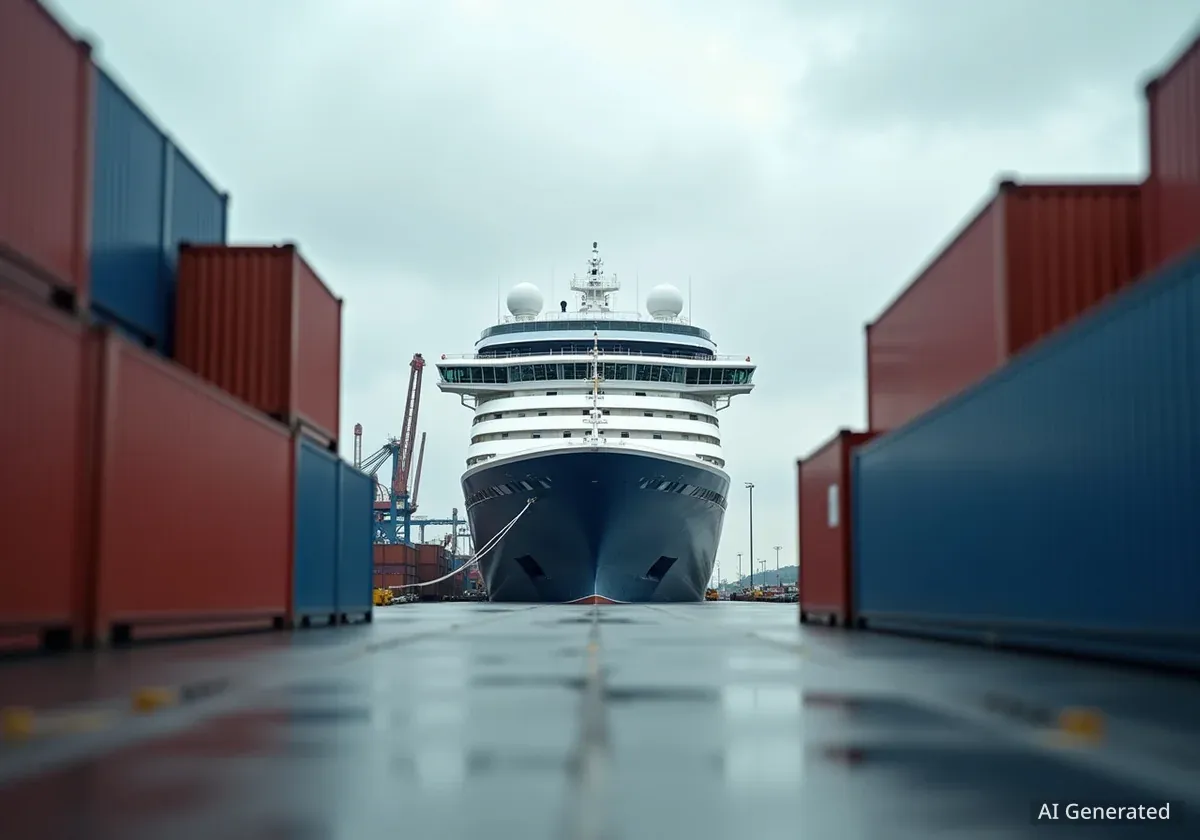A new port charge implemented by the Chinese government is creating significant financial hurdles for U.S.-owned cruise ships operating in the country. This policy, which took effect earlier this month, mandates a special fee for vessels with U.S. affiliations, raising concerns within the cruise industry and leading to immediate operational changes.
Key Takeaways
- China imposed a new port fee on U.S.-linked cruise ships.
- The fee starts at $55 per net ton and will increase annually.
- Oceania Cruises' Riviera cancelled a Shanghai visit due to high costs.
- Royal Caribbean's Spectrum of the Seas received a waiver for homeport operations.
- The charge disproportionately affects large cruise vessels.
New Policy Details and Financial Burden
The new charge requires U.S.-linked vessels to pay 400 yuan, approximately $55, per net ton upon their first call at a Chinese port each year. This initial fee is not static; it is scheduled to increase annually, eventually reaching 1,120 yuan, or over $155, per net ton. Each vessel will incur this charge for a maximum of five voyages per year.
This policy, initially conceived for cargo ships, has a disproportionately large impact on cruise vessels due to their substantial size. The higher net tonnage of cruise liners translates into significantly larger fees, making port calls financially unfeasible for some operators.
Fact Check
- Initial Fee: 400 yuan (approx. $55) per net ton.
- Annual Increase: Fee will rise to 1,120 yuan (over $155) per net ton.
- Voyage Limit: Maximum five charges per vessel per year.
- Scope: Levied at the first Chinese port of call.
Cancellations and Rerouting Decisions
The immediate consequence of this new charge was the cancellation of a scheduled visit by Oceania Cruises' Riviera. This Norwegian Cruise Line Holdings-owned vessel was set to arrive in Shanghai on October 15, 2025. However, under the new rule, the Riviera would have faced a payment of 11.67 million yuan, roughly $1.64 million, to dock in China.
To avoid these substantial costs, the Riviera was diverted. Instead of Shanghai, the ship will now call at Busan, South Korea. This rerouting highlights the direct impact of the new fee on cruise itineraries and operator decisions.
"The financial implications of this new port charge are substantial, forcing companies to re-evaluate their routes and port calls in China."
Waivers and Homeport Operations
While the new policy presents challenges, some exceptions have emerged. Royal Caribbean's Spectrum of the Seas, a major homeported vessel in Shanghai, has received a waiver for this special fee. This exemption allows the 168,666-ton ship to continue its operations from China without incurring the new costs.
Without this waiver, the Spectrum of the Seas would have been required to pay nearly $10 million this year. This figure would have escalated significantly, reaching over $26 million by 2028. The waiver underscores the importance of homeported vessels for Chinese ports and the potential for negotiations.
Background
Shanghai is a critical hub for foreign cruise ships operating in China. Local officials are actively seeking solutions and exemptions, particularly for vessels that use Shanghai as their primary homeport. This indicates an effort to balance new revenue policies with the economic benefits brought by consistent cruise tourism.
Impact on International Cruise Markets
The new port charge primarily targets vessels with U.S. affiliations. However, its broader implications suggest a potential shift in the regional cruise landscape. Cruise ships that primarily cater to international markets, rather than serving as homeports for Chinese domestic tourism, are less likely to receive similar exemptions.
This distinction could lead to a divergence in cruise offerings within China. Vessels focusing on inbound international tourism may find it increasingly difficult to justify port calls due to the escalating fees, potentially shifting their focus to other Asian destinations.
Future Outlook for Cruise Operators
Cruise line operators are now assessing the long-term viability of their Chinese routes under these new financial conditions. The annual increase in the fee means that costs will continue to rise, requiring ongoing strategic adjustments.
The situation in Shanghai, where local authorities are exploring solutions for homeported vessels, indicates that the policy may not be uniformly applied or that negotiations could lead to further adjustments. However, for non-homeported vessels, especially those catering to international passengers, the outlook remains uncertain.
- Operators must consider the escalating costs for future voyage planning.
- The policy could encourage more homeporting arrangements in China.
- International cruise itineraries may see reduced calls to Chinese ports.
The cruise industry is known for its adaptability, but the scale and progressive nature of this new charge demand significant strategic responses from affected companies. The coming months will likely reveal further adjustments to cruise schedules and operations in the region.





